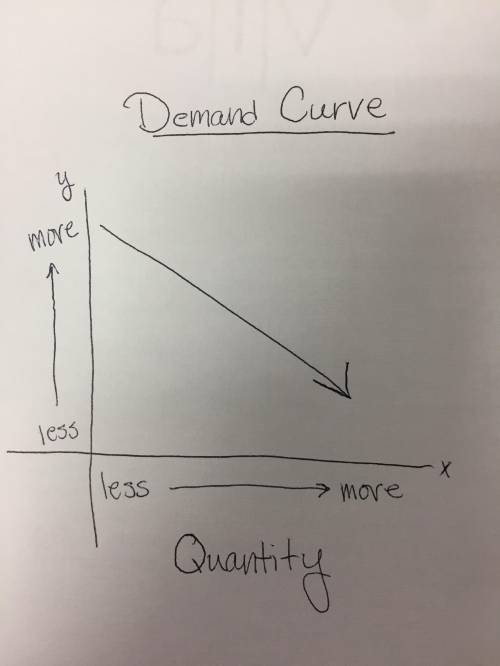
Business, 21.06.2019 20:30 tmmackie9261
According to the law of demand, there is an inverse relationship between price and quantity demanded. that is, the demand curve for goods and services slopes downward. why?

Answers: 3


Another question on Business

Business, 21.06.2019 20:20
Atoy manufacturer makes its own wind-up motors, which are then put into its toys. while the toy manufacturing process is continuous, the motors are intermittent flow. data on the manufacture of the motors appears below.annual demand (d) = 50,000 units daily subassembly production rate = 1,000setup cost (s) = $85 per batch daily subassembly usage rate = 200carrying cost = $.20 per unit per year(a) to minimize cost, how large should each batch of subassemblies be? (b) approximately how many days are required to produce a batch? (c) how long is a complete cycle? (d) what is the average inventory for this problem? (e) what is the total annual inventory cost (holding plus setup) of the optimal behavior in this problem?
Answers: 2

Business, 22.06.2019 01:00
Need with my trade theory homework. i doubt what i wrote was right.consider a monopolistically competitive market for soft drinks in which n symmetric firms face the following demand function: q=s(1/n-b(p-(p with the straight line on which implies the marginal revenue functionmr=p-(q/sb)finally, suppose firms face the total cost functiontc=900,000+100qsuppose the market size, s, is 27,000,000, and the elasticity parameter b is 0.003.diagram the price and the average total cost in the market as a function of the number of firms. what are the equations for each curve, and why does each curve slope up or down? label the equilibrium number of firms and the equilibrium price in the diagram. why is this the equilibrium?
Answers: 1

Business, 22.06.2019 02:30
Consider how health insurance affects the quantity of health care services performed. suppose that the typical medical procedure has a cost of $160, yet a person with health insurance pays only $40 out of pocket. her insurance company pays the remaining $120. (the insurance company recoups the $120 through premiums, but the premium a person pays does not depend on how many procedures that person chooses to undergo.) consider the following demand curve in the market for medical care. use the black point (plus symbol) to indicate the quantity of procedures demanded if each procedure has a price of $160. then use the grey point (star symbol) to indicate the quantity of procedures demanded if each procedure has a price of $40. q d at p=$160 q d at p=$40 0 10 20 30 40 50 60 70 80 90 100 200 180 160 140 120 100 80 60 40 20 0 price of medical procedures quantity of medical procedures demand if the cost of each procedure to society is truly $160, the quantity that maximizes total surplus is procedures. economists often blame the health insurance system for excessive use of medical care. given your analysis, the use of care might be viewed as excessive because consumers get procedures whose value is than the cost of producing them.
Answers: 1

Business, 22.06.2019 20:10
Your sister is thinking about starting a new business. the company would require $375,000 of assets, and it would be financed entirely with common stock. she will go forward only if she thinks the firm can provide a 13.5% return on the invested capital, which means that the firm must have an roe of 13.5%. how much net income must be expected to warrant starting the business? a. $41,234b. $43,405c. $45,689d. $48,094e. $50,625
Answers: 3
You know the right answer?
According to the law of demand, there is an inverse relationship between price and quantity demanded...
Questions

English, 16.10.2021 17:50

Mathematics, 16.10.2021 17:50



Mathematics, 16.10.2021 17:50

Biology, 16.10.2021 17:50


History, 16.10.2021 17:50

Mathematics, 16.10.2021 17:50





English, 16.10.2021 17:50





Physics, 16.10.2021 18:00

Social Studies, 16.10.2021 18:00




